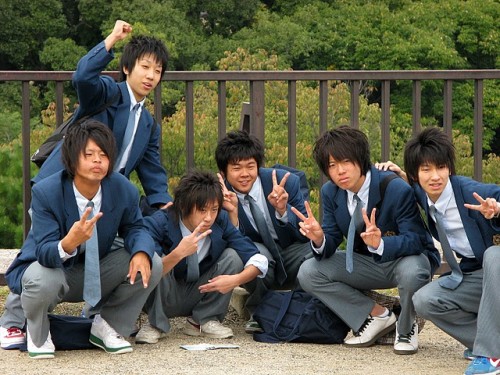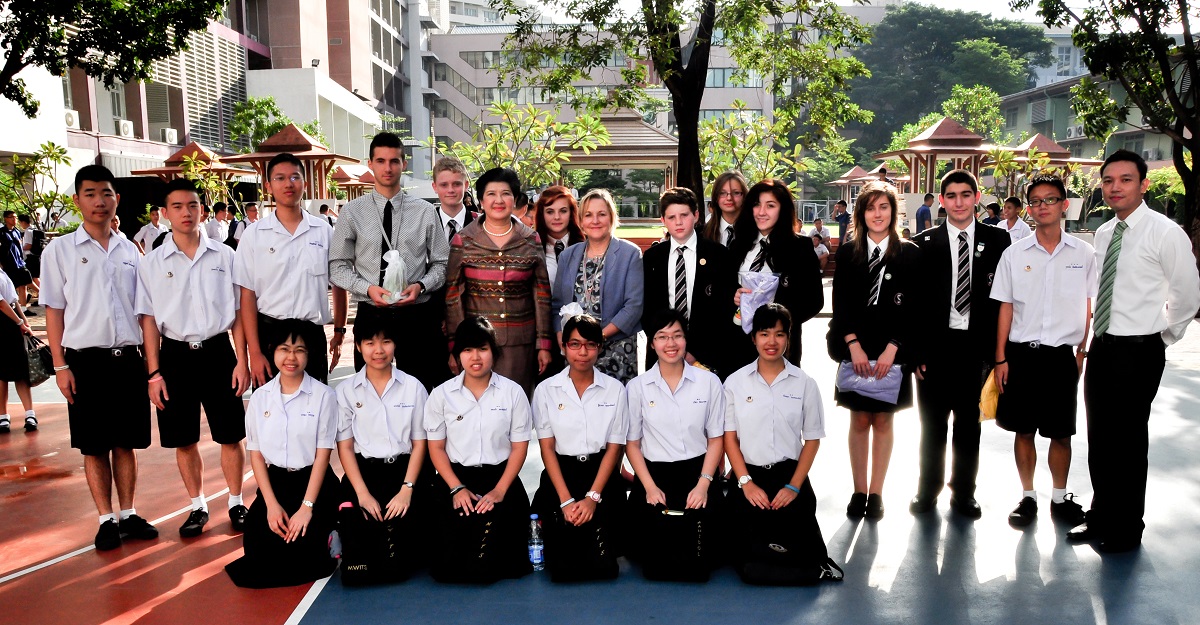What’s in a school uniform? (And, if you clicked on this story because the main image showed EXO-K[orea]‘s six members – all well out of high school – still dressed in school uniforms for a photo shoot, you kinda understand the appeal of the school uniform in popular Asian, and non-Asian, imaginations.)
Japan
Visiting, you’ll see groups of students wearing school uniforms. Some may have graduated, actually; there was once an on-street interview asking those who’d left school why they still wore their uniforms, with the popular answer, “Because the uniform is still our favorite piece of clothing.” It’s a bit of a fashion symbol.
The reality:

Some super cool boys who go to the same hairstylist

Some super cool girls – the “sailor” look is typical of Japanese school uniforms
The not-so-reality:

Mutton dressed up as lambs – I mean, “street style”
South Korea
The Korean uniform is another one that’s steeped in pop culture: the girls usually wear white shirts and plaid, pleated skirts, while boys wear white shirts and trousers. Indeed, the uniforms show energy and some fashion.
The reality:

Some Korean students
The not-so-reality:

SNSD/Girls’ Generation in a world of their own

The cast of To the Beautiful You, a K-drama set in high school
Thailand
Schools in Thailand have strict dress codes: all students from primary schools to universities are required to wear uniforms every day. While primary schools’ uniforms are usually in bright colors, older students follow the white top (blouse, shirt) and black bottom (skirt, trousers) look. In 2013, Thai university uniforms were voted the “sexiest” among Asian uniforms by a poll conducted by Japanese media.
The reality:

A middle school in Thailand
The not-so-reality?:

A form of university-regulated uniforms
Malaysia
Malaysia is a Muslim country, so the students have very strict dress code. The girls’ skirts must be below the knee, and the sleeves long enough to cover elbows.
The reality:

Modesty in pinafores
Vietnam
The ao dai is a traditional Vietnamese costume with hundreds’ of years of history. A search online has many visitors talking about this beautiful scene: girls in white ao dai, riding a bicycle or walking and talking to friends. Clean, fresh, and all-purpose. Besides, selecting traditional wear as school uniforms is a brilliant idea: it provides a way for the younger generation to learn and be proud of their ethnic identity and culture.
The reality:

Two students ride a bike to school
The not-so-reality?:

Couldn’t tell if this was a photo shoot; the ao dai are missing the school’s emblem over the chest
China
School uniforms in China are basically sportswear, designed for activities, with a clear lack of fashion. Most Chinese uniforms that aren’t exercise outfits follow the Japanese/Korea styles, with blazer, shirt, and skirt/trousers.
The reality:

Exercise those young minds!

A step above the “sporty” look